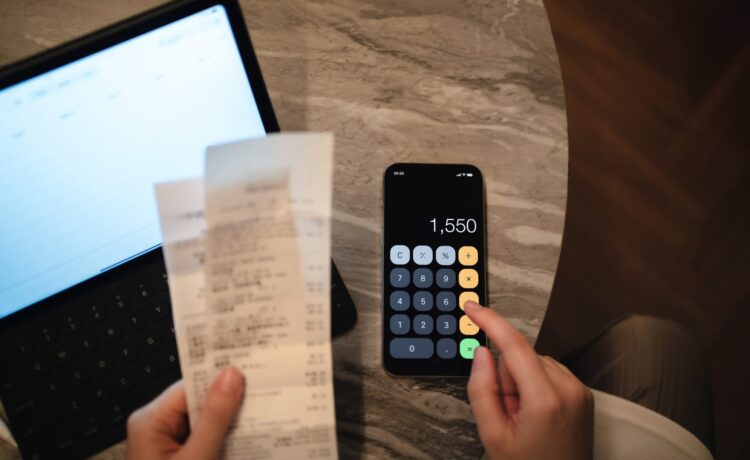If the thought of budgeting gives you a headache, there’s another way to approach managing your money without tracking every expense or obsessing over spreadsheets. It’s called intuitive budgeting.
With intuitive budgeting, you take a more flexible, mindful approach to money that aligns your spending with your actual values.
What is intuitive budgeting?
Intuitive budgeting is basically just as it sounds — budgeting with your intuition. It’s budgeting without the stress of spreadsheets and super strict rules. Instead of tracking every single thing, you focus on your baseline costs (aka rent) and, outside of those needs, how purchases make you feel. It’s more about being mindful with money rather than obsessing over numbers.
Who is intuitive budgeting best for?
Intuitive budgeting really depends on what works best for you, but here are a few signs it might be a good fit:
- If you don’t like rigid systems and apps
- If you have an income that isn’t the same every month
- If you want flexible spending categories
- If you’re just starting out and don’t want to feel overwhelmed
- If you have guilt or shame around spending money
Step-by-step guide to intuitive budgeting
Here are three simple steps to get started with intuitive budgeting:
1. Check your habits
Start by looking at your last month or two of bank and credit card statements. Notice where your money has naturally gone and how those purchases have made you feel. Has your spending aligned with what you value? Instead of tracking expenses, you’re reflecting on your natural spending patterns and the emotions that are tied into them.
2. Make simple buckets
With intuitive budgeting, you don’t need to categorize your spending into dozens of buckets. Instead, you can have a few simple topics that speak to you. One bucket covers your non-negotiables, such as your rent or mortgage, utilities, transportation and food. Whatever’s left over is your flexible spending; you can have a category of what brings you joy and another envisioning the future you. This practice helps you to understand what you value.
3. Do quick check-ins each week
Similar to when you checked your past monthly spending at the beginning, you’re now checking in once a week for a few minutes to reflect on what purchases felt good and what didn’t. Ask yourself, “Does my spending still feel aligned with my priorities?” or “Do I need to slow down anywhere?” These micro check-ins help you course-correct before things spiral. If you overspent, ask yourself what was happening during that time that may have caused you to overspend. You’re being gentle with yourself and instead of restricting yourself from the beginning, you’re learning by practice.
Common pitfalls of intuitive budgeting (and how to avoid them)
Here are some risks to intuitive budgeting:
- You feel good so don’t check in: Your weekly check-in doesn’t have to be more than five or so minutes. It’s a quick look at your account balance and a reflection on spending so you can tweak for next week. The longer you delay checking in, the less you’re in tune with how certain purchases make you feel.
- You buy something in the moment because you deserve it: This isn’t intuitive spending; this is impulse buying. Make sure it’s something you would value long-term and avoid making purchases when you’re bored or needing “retail therapy.” You can always sleep on it and come back tomorrow.
- You disregard any numbers entirely: Even though it’s called intuitive budgeting, you must know the important numbers like your monthly income and your fixed expenses. There’s no working around those.
- You have zero financial goals: You can spend intuitively while also setting up goals that speak to your values, whether that’s debt freedom or saving up for a home.
FAQs
How do I start intuitive budgeting?
You can begin intuitive budgeting by getting a good sense of your recent spending and making a few simple and flexible spending categories.
Is intuitive budgeting effective for saving money?
Yes, intuitive budgeting can help you save money. It forces you to spend only on what you value and scale back on paying for short-lived happy purchases.
How is intuitive budgeting different from traditional budgeting?
Unlike traditional budgets that track every dollar, intuitive budgeting focuses more on your values and how your spending makes you feel.
Subscribe to the CNBC Select Newsletter!
Money matters — so make the most of it. Get expert tips, strategies, news and everything else you need to maximize your money, right to your inbox. Sign up here.
Why trust CNBC Select?
At CNBC Select, our mission is to provide our readers with high-quality service journalism and comprehensive consumer advice so they can make informed decisions with their money. Every budgeting article is based on rigorous reporting by our team of expert writers and editors with extensive knowledge of personal finance products. While CNBC Select earns a commission from affiliate partners on many offers and links, we create all our content without input from our commercial team or any outside third parties, and we pride ourselves on our journalistic standards and ethics.
Catch up on CNBC Select’s in-depth coverage of credit cards, banking and money, and follow us on TikTok, Facebook, Instagram and Twitter to stay up to date.
Editorial Note: Opinions, analyses, reviews or recommendations expressed in this article are those of the Select editorial staff’s alone, and have not been reviewed, approved or otherwise endorsed by any third party.





